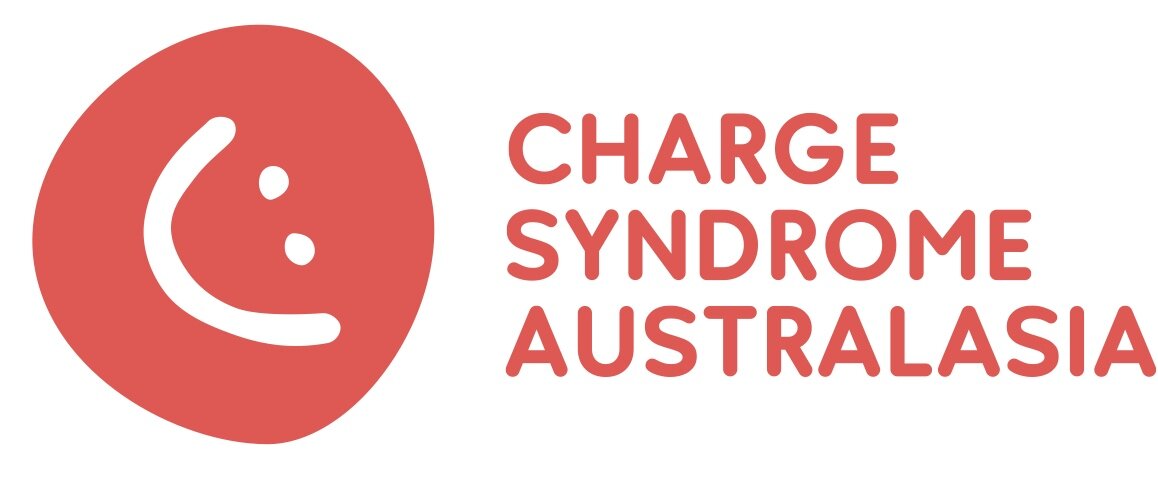What is CHARGE syndrome?
“CHARGE syndrome, also known as CHARGE Association, is a specific set of birth features. The major diagnostic criteria were based on the letters in CHARGE. Not all individuals with CHARGE syndrome will have all the symptoms, and each of the symptoms can vary in their degree of severity.” (Sandra L.H. Davenport, M.D.)
What do the letters in CHARGE syndrome stand for?
Coloboma of the eye - a cleft or ‘keyhole’ in the eyeball
Heart defect - usually corrected by surgery
Atresia of the nasal choanae - blockage at the back of the nasal passage
Restricted growth and/or development
Genital and/or urinary abnormalities
Ear and vestibular abnormalities, deafness - varying degrees
What are the features of CHARGE syndrome?
In 1998, Dr Kim Blake and colleagues reclassified the major and minor characteristics of CHARGE syndrome.
Major characteristics
Coloboma of the eye
Choanal atresia
Characteristic ear abnormalities
Cranial nerve dysfunction
Minor characteristics
Genital abnormalities
Developmental delay
Cardiovascular malformations
Growth deficiency
Orofacial clefts
Tracheoesophageal fistula
Distinctive facial features
For more information about each of these features, visit the Signs & Symptoms page of the CHARGE Foundation website.
What causes CHARGE syndrome?
CHARGE syndrome is caused by a change in the gene CHD7. Most of the time, the CHD7 change happened only in the one sperm or egg that formed your child with CHARGE syndrome. CHARGE syndrome does not usually affect other members of a family and it is not caused by any known exposures during pregnancy.
Is there a test to confirm CHARGE syndrome?
There is a test, but it is not perfect. More than 80% of children with CHARGE have identifiable changes in the CHD7 gene. CHD7 gene testing can be ordered (by itself or as part of a panel of genes) and the test takes several weeks to be completed.
However, it does not always provide answers. If a change in CHD7 is identified in a child with CHARGE syndrome features, then the diagnosis is confirmed. On the other hand, if a CHD7 change is not identified, it does not rule out CHARGE syndrome. CHARGE syndrome is still diagnosed by a medical geneticist primarily based on clinical features.
Read more about diagnosis and testing on The CHARGE Syndrome Foundation website .
What are the expected outcomes likely to be?
The range of outcomes in individuals with CHARGE is as broad as it could possibly be. Individuals with CHARGE need medical care appropriate to their particular features. In addition, early intervention and appropriate educational and vocational programs specific to their developmental needs, are essential. With these supports in place individuals with CHARGE have every opportunity to reach their developmental potential.
How does CHARGE syndrome affect cognitive abilities?
Intelligence in children with CHARGE is often difficult to measure and underestimated due to the impact of multi-sensory impairment and other developmental challenges. Professionals with an understanding of the challenges will be able to identify the most effective interventions to support positive outcomes.
What is the life expectancy for people with CHARGE syndrome?
In the first few years there is an increased risk of serious medical issues. Although individuals with CHARGE may remain medically fragile, they are able to adapt and lead productive and fulfilling lives.
Will I have another baby with CHARGE?
Probably not. The CHARGE Syndrome Foundation website states that “Based on the experience of thousands of families, the recurrence risk is 1-2% on average.” However, if a parent tests positive for the CHD7 change detected in the affected child, there is a 50% chance of passing on the gene to another baby. Always confirm the information relevant to your family, with your medical geneticist or genetic counsellor.
Read more about recurrence risks on The CHARGE Foundation website .
What about my child’s children?
An individual with CHARGE syndrome, has a 50% chance of having a baby with CHARGE. People in the family with the same CHD7 change, may or may not have similar features. Always confirm the information relevant to your family with your medical geneticist or genetic counsellor.
How many people with CHARGE syndrome are there in Australia/New Zealand?
We do not know how many people there are across Australia and New Zealand with CHARGE Syndrome. As CHARGE Syndrome was only identified in 1981, there are people who are living their lives undiagnosed. The worldwide occurrence is 1 in every 10, 000 - 15,000 births.
The Australian and New Zealand facebook group has 500 members (some members are from overseas). Roughly 100 people attend our conferences, which are held every two years. However, there are many more people within the CHARGE Syndrome community who are not in the facebook group, or who do not attend the conference. And we know that some people are not diagnosed until in their 50’s!
How can I learn more?
We have a free online course offering university-quality education on the latest knowledge and research on CHARGE syndrome from the world’s foremost experts in the field. There are also books and publications available. Start on our learning about CHARGE syndrome page.
Where can I get support?
Visit our support section for information on advocacy support, and how to connect with our community.
Sources
Content on this page has been reviewed by Rob Last, Liz Levesque and Meg Hefner.
